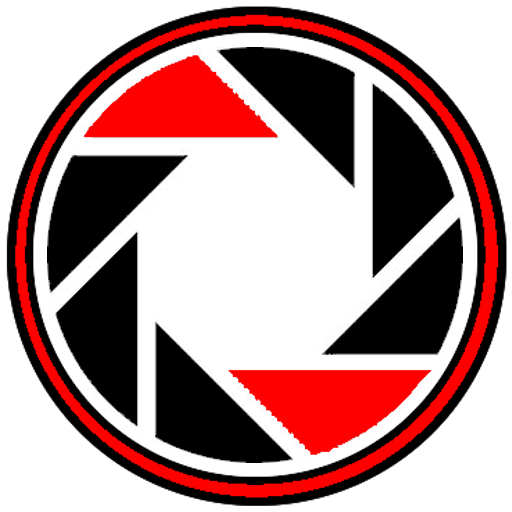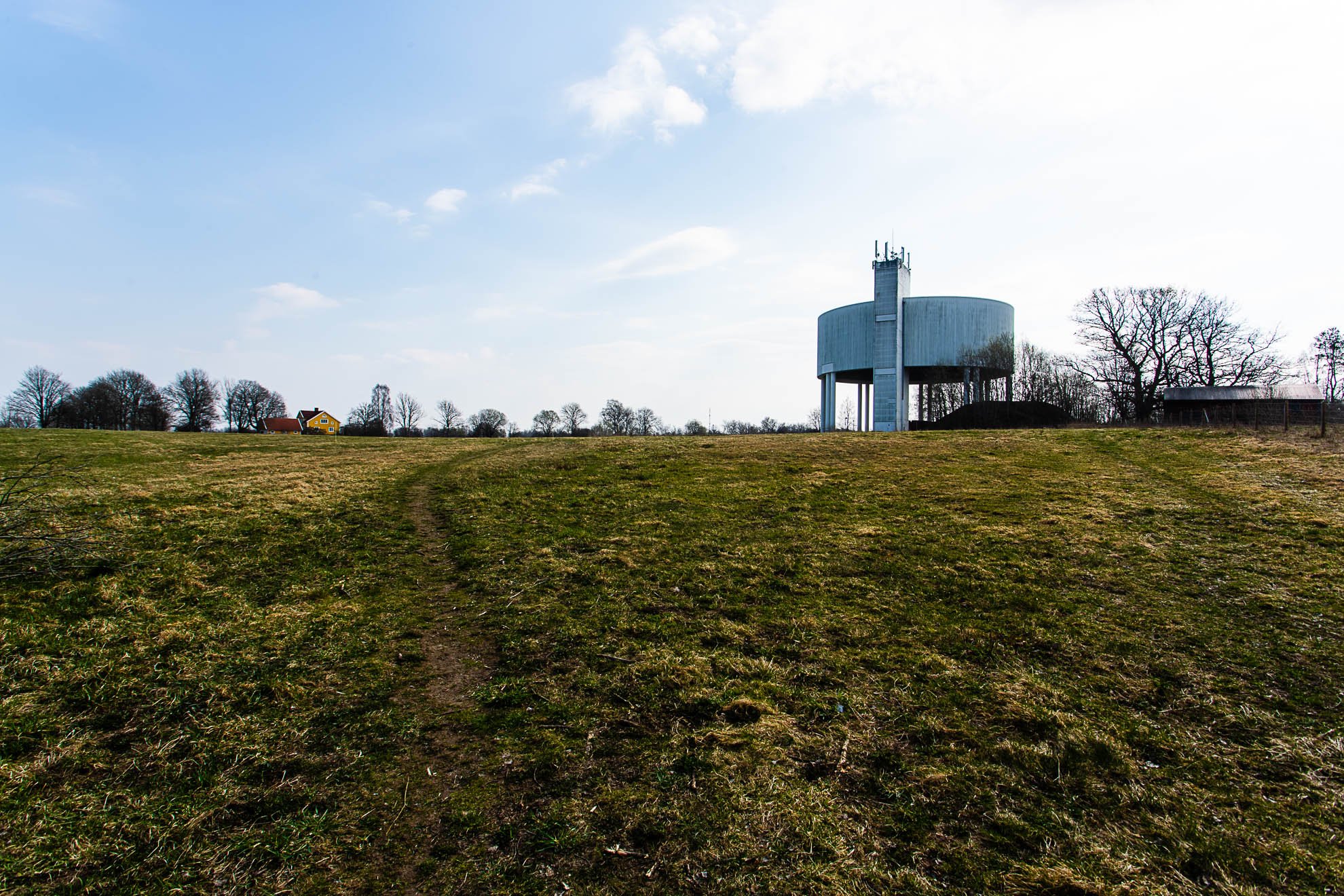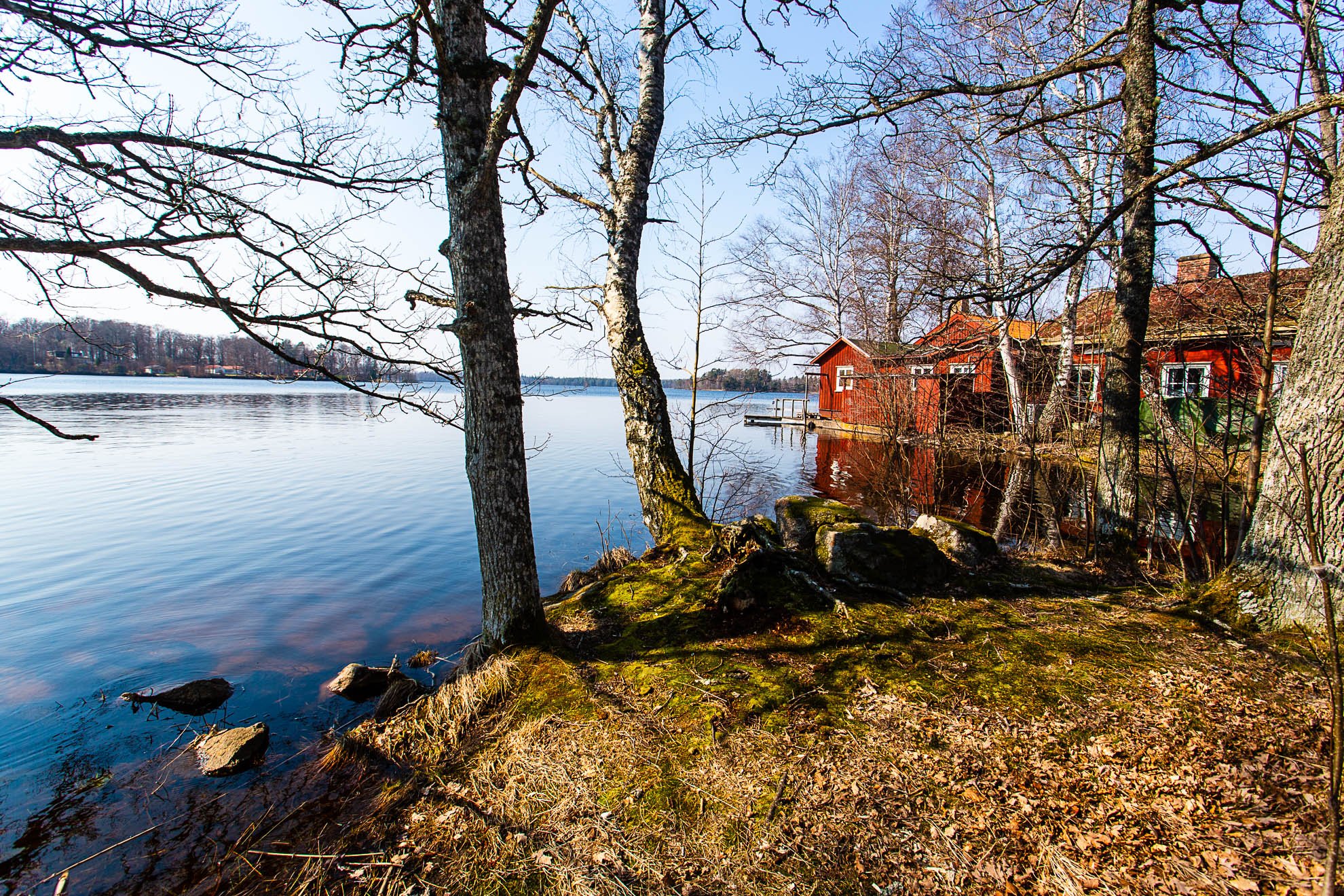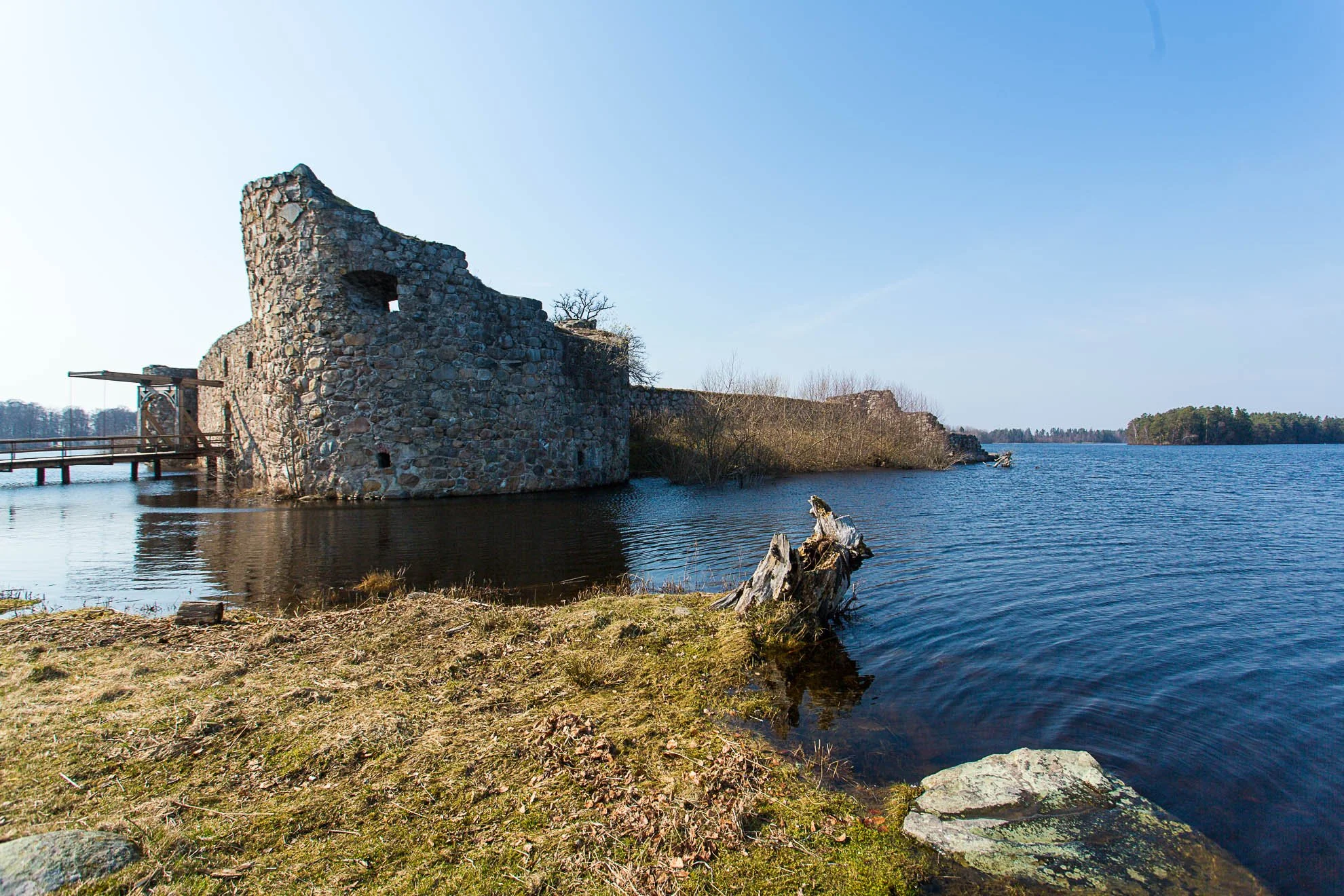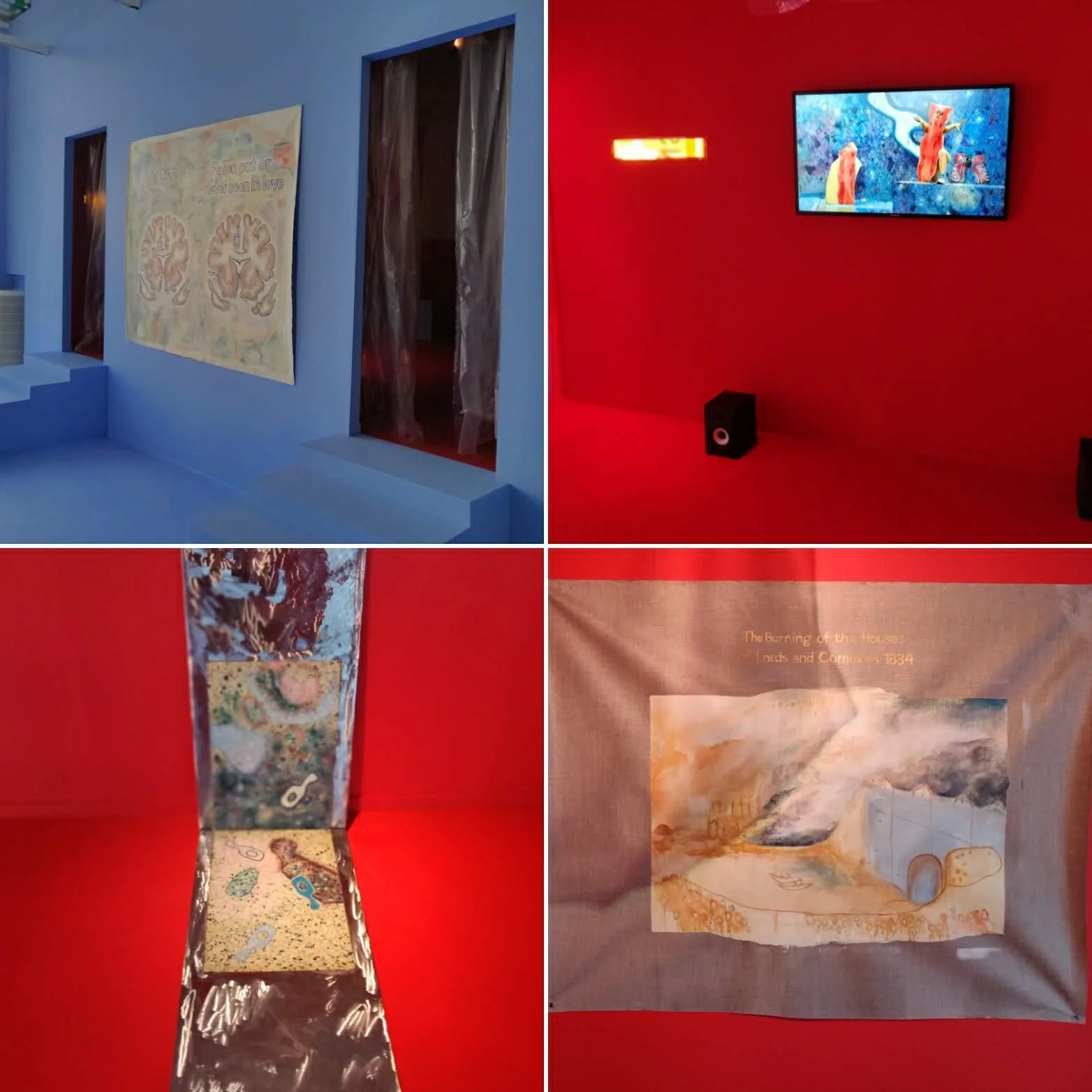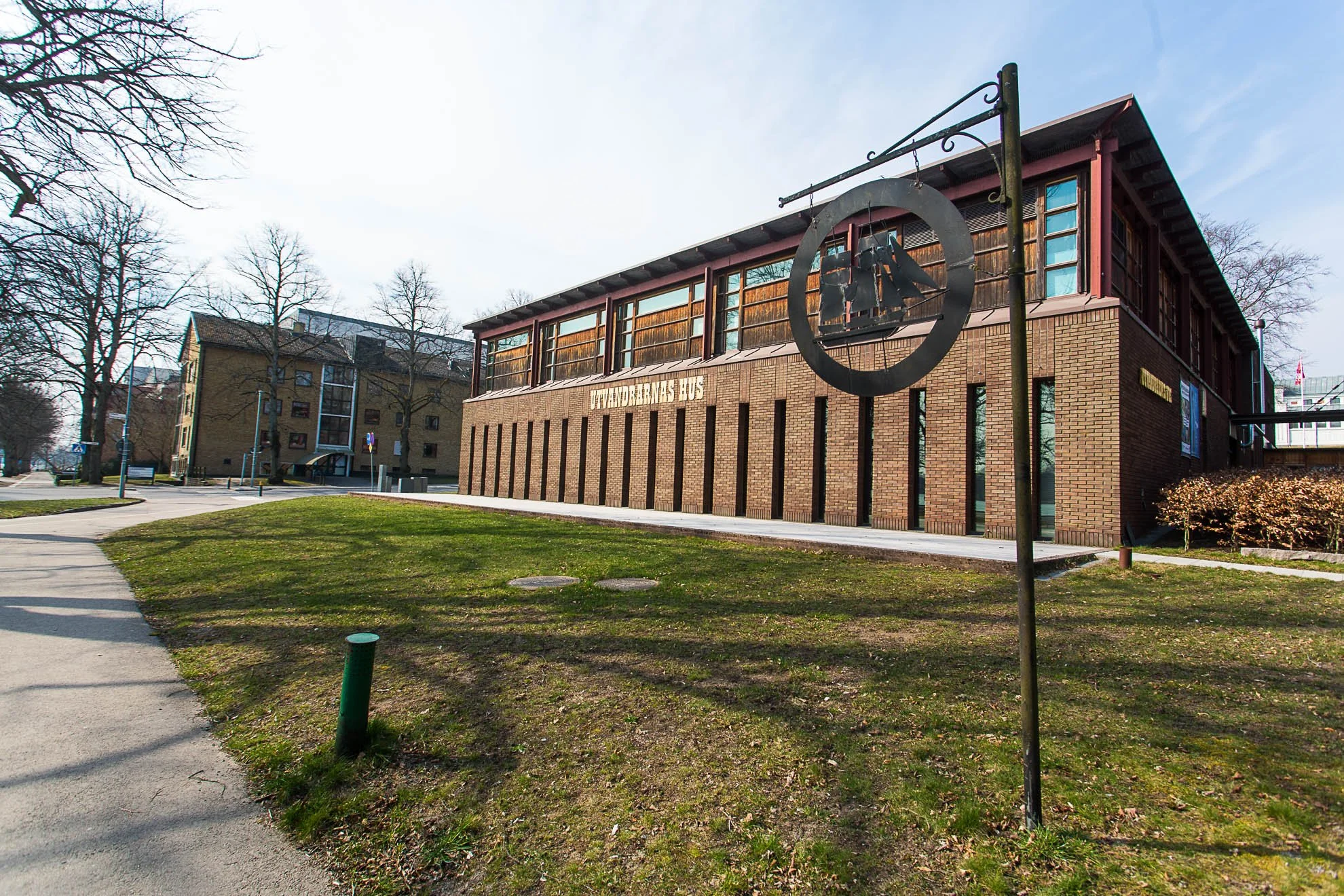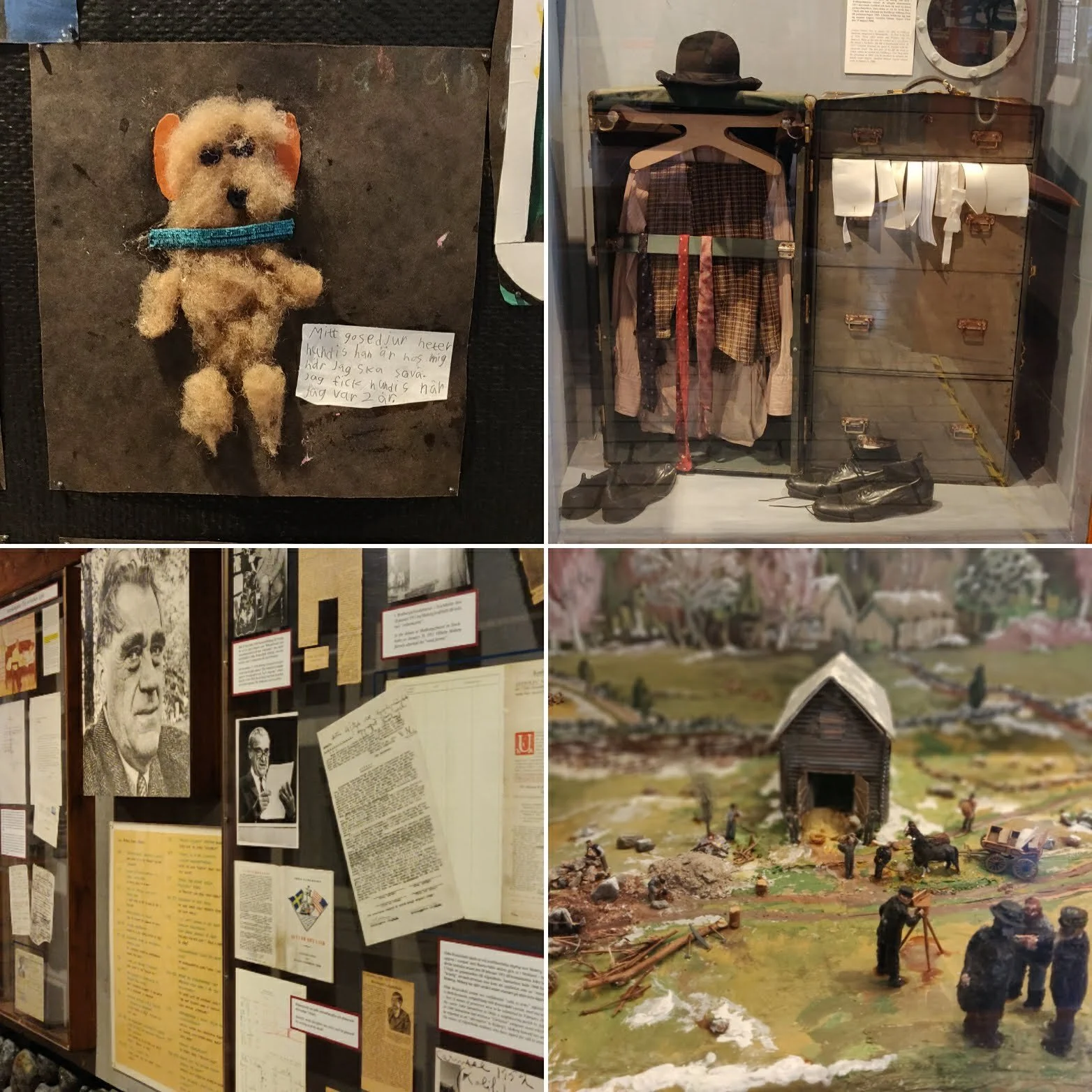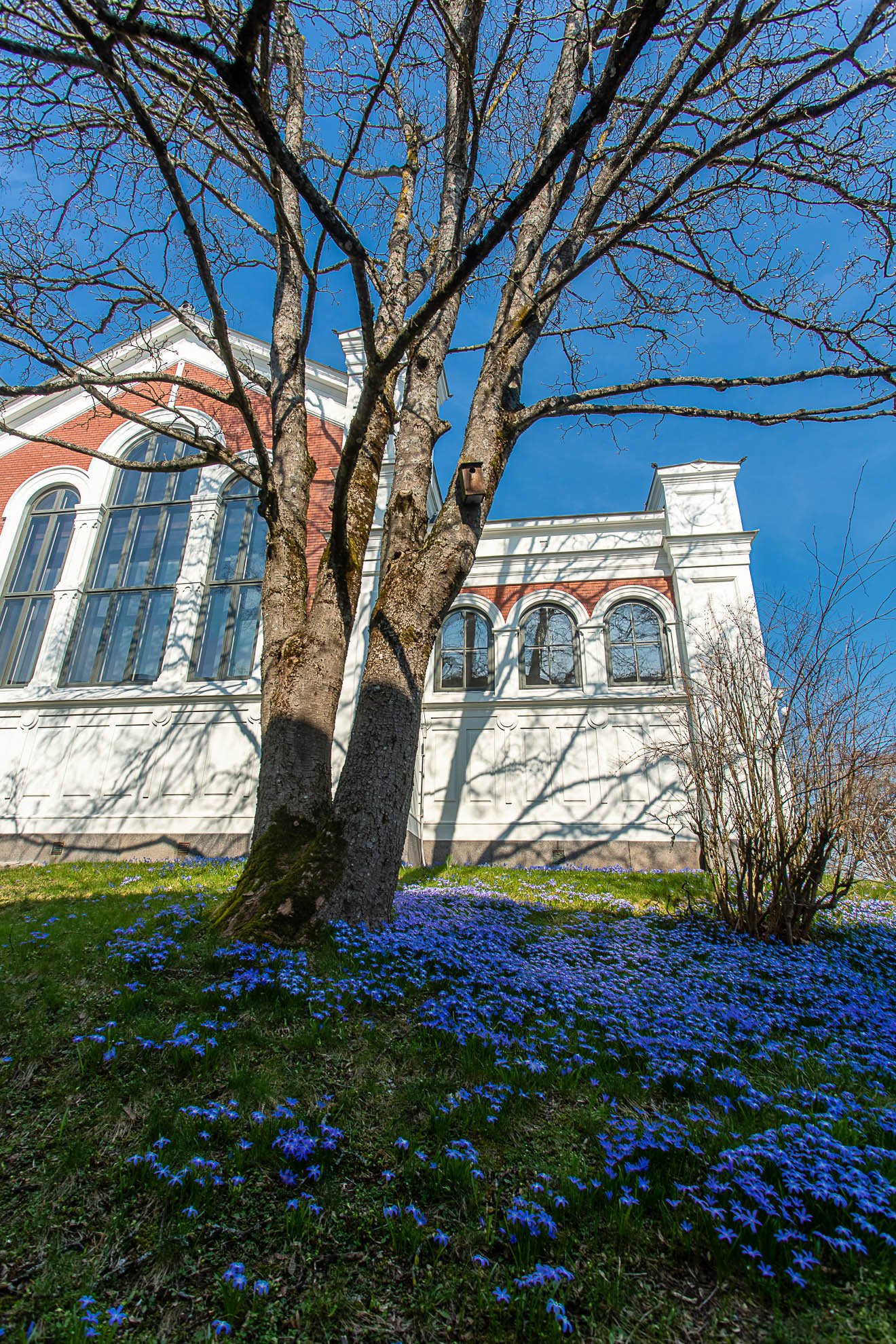Växjö
Växjö gives the impression of being larger than it actually is. With a population of under 70,000 people, it is smaller than Halmstad, but the combination of the large lake in the town center, the sports arena and a sizeable shopping district gives it the impression of being a much larger location.
Priding itself on its environmental credentials, Växjö calls itself the Greenest City in Europe and has done so since 2007.
The city is clean, well maintained and has numerous shops, wide plaza streets and as spring has arrived, a great deal of outside seating.
Sights & Culture
Glass Street
Of particular note, the Glass Street, officially called Sandgärdsgatan, runs along the south end of the main shopping area and has a number of statues and other sculptures heavily featuring locally made glass, one of Växjö primary exports and something they are extremely proud of.
Teleborgs Slott
It was built near the Linnaeus University in the year 1900 as a morning (wedding) gift. In the middle of a university campus, it is an unusual sight. Used as a hotel for guests, it is a faux-castle, a single tower jutting up from the top of a hill.
The surrounding park and views over the river make it a lovely spot, if you can ignore the nearby new build university buildings. Worth a five minute detour.
Ekotemplet
A strange building, down a side road from Teleborgsvägen, the strange water tower is in the middle of a field. Blocked one way by a private road, its not easy to get to by car.
The shape of the water tower amplifies noise underneath it leading to its name the Echo Temple. Small noises are amplified and echos are clear. Its an interesting spot to visit if you are nearby and can find your way there.
Bergkvara slottsruin
Not far from Växjö town, there is the Bergkvara castle ruin. Surrounded on three sides by water, the only access it to park nearby and go through the private grounds of a large manor house (They allow this, but ask you keep to the pathways)
The ruins are first mentioned in 1355, it was described as decayed by the mid 18th century, the owners having built the manor (also called Bergkvara) nearby and moved into that the castle slowly fell to the ruin it is now.
Much smaller than the nearby Kronobergs Slottsruin, you are able to go inside the square building at any time of year.
Kronoberg Slottsruin
To the north of Växjö is Kronoberg Slottsruin, a reasonably large castle ruin on an island in lake accessible only via bridge.
There is a large parking lot, and a cafe and toilet (open summer months only) as well as a summer ferry across the lake. During the summer there is access to the central courtyard of the castle, but the rest of the year, visitors should content themselves with outside views.
After the original stone building here was destroyed in the Dano-Swedish war, it was rebuilt as as fortified castle in 1472. For its first few hundred years, the castle was a key strategic location, as it was on the Swedish/Danish border.
The castle was neglected from the mid17th Century onwards and decayed, though its heavy stone walls have largely remained intact at the front.
There is a small island in front of the castle, connected via bridge to the mainland and via drawbridge to the castle itself. Even in sprint, this is a popular picnic location with locals and gives good views of the castle sides.
Växjö domkyrka
Just north of Linnéparken is the Cathedral of Växjö. Of medieval origin, it is heavily reconstructed in the 19th and 20th centurys, leaving little of its medieval origins visible.
It’s twin spires give it an unusual and striking appearance and it is well worth a viewing.
Museums & Galleries
Konsthallen
Comparatively small, only a single floor, the Art Museum, there are generally two exhibitions on. The first was “About A Brexit, No I Mean a Breakup“ a strange look at the lifecycle of a relationship, featuring a 20 hour dance routine in a bacon costume to the tune of “I want you back”. This was originally performed live and live-streamed before being put on loop in the museum.
The second was “Elegant on Västerportsvägen” a series of over a hundred paintings done by a single artist, blending styles of painting.
Worth visiting with free entrance, but it won’t take too much of your day to see it all.
Utvandrarnas hus
Perhaps the most famous museum in Växjö, the Emigrants House documents the departure of almost a third of the Swedish population to the US and Canada at the start of the 20th Century. By 1930, Chicago was the second largest Swedish city, with only Stockholm having a greater number of Swedes. It was also interesting to learn that a potato famine was responsible for much of the migration, similar to the Irish emigration. There are models and some few items of emigrants, but primarily the story is told in text and images, with a small model street to view.
There is a room dedicated to Vilhelm Moberg, famous for his Swedish novels about the emigration, and there is always a temporary exhibit, at the time on the dangers and influence of Propaganda.
Finally, there is a good sized auditorium, where a number of talks are given throughout the year.
Småland Museum
The Småland Museum is the oldest county museum in Sweden, built in 1792 and tells the history of the region. There is a scale model of how Växjö once looked, as well as a walk through of traditional tools and items from the home. Norway’s Outdoor Museum takes the idea quite a lot further, but it is worth a look. Additionally there is room, with working loom (which you can use under supervision) along with a number of antique carpets that were locally woven.
Finally there is a number of pre-historic items relating to early settlers in the area such as bow and arrows, flint and maps for grave sites.
Glass Museum
Linked to the Småland Museum, and sharing a ticket with with it and the Emigrants House, is the glass museum, perhaps the pride of Växjö. The ground floor is dedicated to the practical, the glassworks produced by the region over the years. Interestingly items used in the manufacture of the glass are used for display. Banners are hung from suspended glass blowing tubes, items are stood on disused trolleys. Its a subtle touch, but makes a real difference
Upstairs there is much more artwork made of glass. Artists creating strange and beautiful creations using glass as their medium.
Parks & Gardens
Växjösjön
Almost exactly five kilometres in circumference, just to the south of the Cathedral and still quite central to the town is Växjösjön lake. There is a restaurant on the north shore, and a walking and running track surrounds it. On a good day it is popular and has a lovely view.
Linnéparken
Between Växjösjön and the Cathedral is Linnéparken, a small park with children's area, and a number of plants and sculptures. It runs down the lake edge until it reaches the swimming pool.
Restaurants & Bars
There are a number of good places to eat in Växjö, many Swedish chains have a presence as well as a good number of entirely local options.
Lilla Mexico
A small Mexican off of the main shopping area, the menu is small but good and the spiciness dialled back, but this is Sweden, but the service is great.
Massimo
An upmarket Italian, serving very good pasta. They have a communal table for casual diners as well as more typical seating.
Kafé de luxe
A hipster venue, with an old world vibe. The menu is limited but good, and the tables have folding wooden seating which have a certain charm. Its got a raised external patio overlooking glass street and often has live music.
